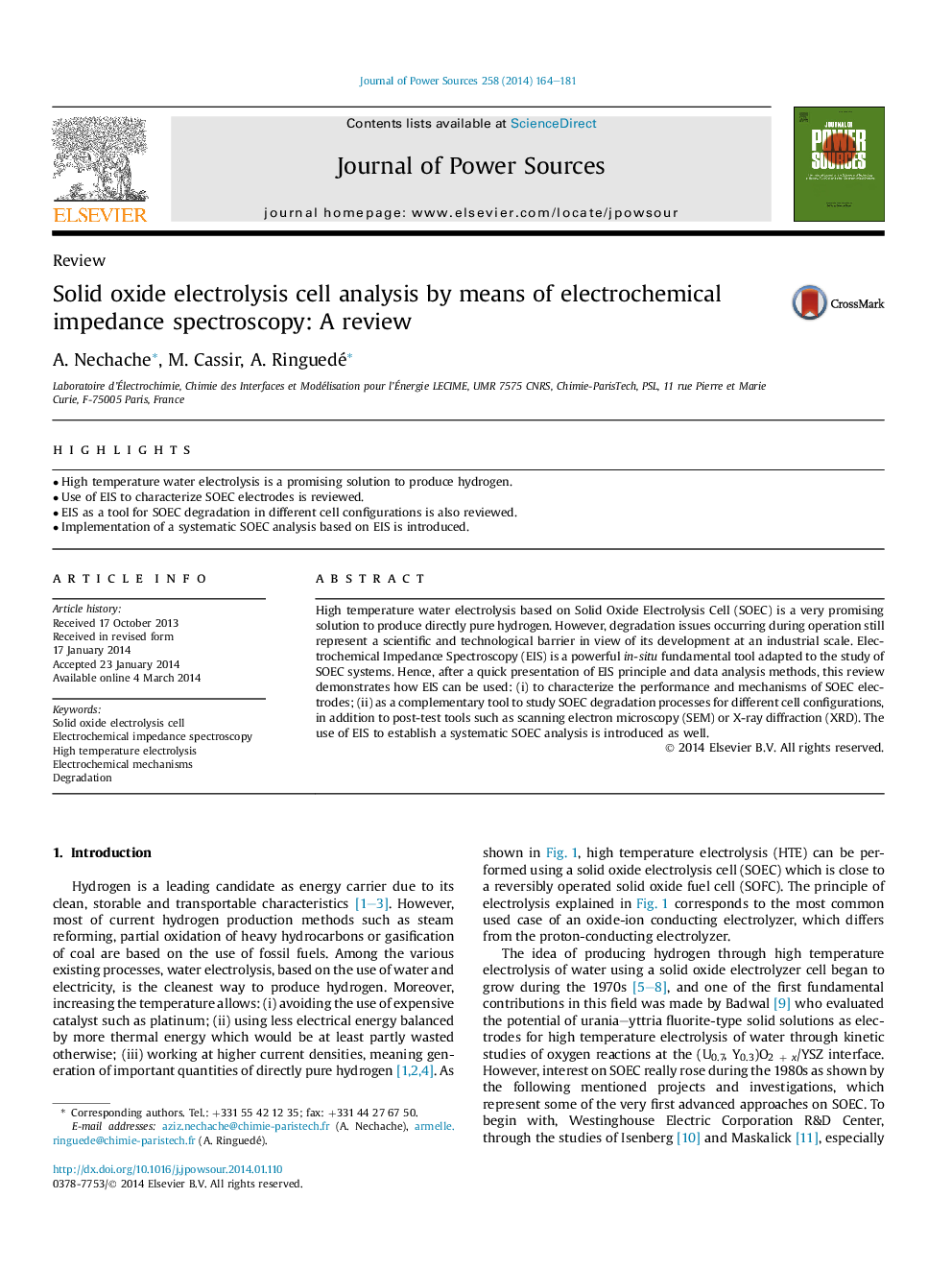| Article ID | Journal | Published Year | Pages | File Type |
|---|---|---|---|---|
| 7736491 | Journal of Power Sources | 2014 | 18 Pages |
Abstract
High temperature water electrolysis based on Solid Oxide Electrolysis Cell (SOEC) is a very promising solution to produce directly pure hydrogen. However, degradation issues occurring during operation still represent a scientific and technological barrier in view of its development at an industrial scale. Electrochemical Impedance Spectroscopy (EIS) is a powerful in-situ fundamental tool adapted to the study of SOEC systems. Hence, after a quick presentation of EIS principle and data analysis methods, this review demonstrates how EIS can be used: (i) to characterize the performance and mechanisms of SOEC electrodes; (ii) as a complementary tool to study SOEC degradation processes for different cell configurations, in addition to post-test tools such as scanning electron microscopy (SEM) or X-ray diffraction (XRD). The use of EIS to establish a systematic SOEC analysis is introduced as well.
Keywords
Related Topics
Physical Sciences and Engineering
Chemistry
Electrochemistry
Authors
A. Nechache, M. Cassir, A. Ringuedé,
